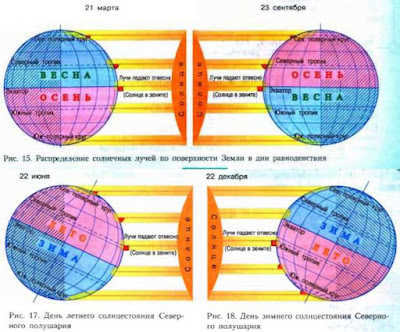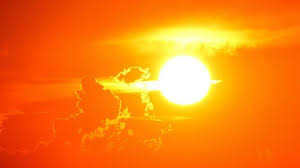Where on Earth can we find a location where the duration of day and night is always the same, and the Sun reaches its highest point twice a year – during the spring and fall equinoxes?
I have grown accustomed to the shorter daylight hours and longer periods of darkness during the winter months, but in the summer, it’s the opposite. I have often wondered if there exists a place on our planet where day and night are always equal. Considering the existence of the fall and spring equinoxes, we should be able to find an answer to this question.

Spring Equinox
The term “spring equinox” refers to the specific moment in time when the Sun crosses the equator line in its visible movement. This event takes place during the spring season. In other words, our solar system’s main star transitions from the Southern Hemisphere to the Northern Hemisphere. As a resident living above this imaginary line, the spring equinox signifies the day when daylight hours become longer than the night hours (until autumn), after a long and cold winter. However, in September, this pattern reverses. The vernal equinox is typically observed on March 20th and 21st.

The Fall Equinox
When considering this concept, one can immediately draw a comparison to the spring equinox. However, after this moment, the length of the day will start to decrease in comparison to the night. Many believe that during this period of equal day and night, it is important to “connect with your mental state” as it is believed that a person’s perspective can change during these moments. Often, people perform various rituals during the equinox. Some of these rituals include:
- Starting the day by taking a bath or shower;
- Washing in the evening to maintain the beauty of women and the health of children;
- Baking a round cake with apple filling. If it doesn’t burn and rises, it is believed that finances will improve.
These beliefs are held by everyone, each in their own unique way, either with faith or skepticism. It is ingrained in our nature that extraordinary moments call for miracles to occur. Is there a place where such a miracle endures eternally, where the equinox lasts throughout the entire year?

Where the sun is always at its zenith
Considering that the equinox is characterized by the Sun crossing the equator, it is reasonable to assume that the length of day and night is always equal at the equator. The Earth’s primary star is directly overhead at this location. In the hemispheres, this phenomenon occurs only twice a year.
Simplifying the complex, clarifying the simple, and summarizing everything succinctly.
How the distribution of light and heat occurs on the Earth’s surface, 5th grade
Answers to the questions from the textbook “Geography” for 5-6th grade, Alekseev A.I., page 28
Paragraph 7 “Sunlight on the Earth”
How is the distribution of light and heat on the Earth’s surface accomplished? What takes place on Earth during the solstice and equinox?
The Earth’s axial rotation causes the alternation of day and night.
The Earth’s orbital rotation leads to the change in seasons throughout the year.
This occurs due to the tilt of the Earth’s axis.
At the equator, the duration of day and night is always the same. At the poles, polar day and polar night each last approximately six months, meaning they are equal in length.
It is a known fact that the duration of the polar day at the North Pole is 190 days, whereas the polar night only lasts 175 days. This phenomenon can be attributed to the refraction of sunlight in the Earth’s atmosphere. However, this topic is not typically covered in 5th-grade curriculum.
According to the paragraph, it states, “At the North and South Poles, polar day and polar night will each last half the year.”
At the equator, the length of the day and night is always equal. The sun reaches its highest point in the sky, known as its zenith, twice a year at the equator.
6. Finish the sentence, “The angle at which the sun’s rays hit the Earth’s surface and the altitude of the sun above the horizon decrease when…”
Complete the statement: “…the latitude increases” (meaning, when you move from the equator towards the poles).
Both statements 3 and 4 are accurate (refer to the figure).
On March 21 and September 22, the equinoxes, Figure 15 illustrates the equal illumination of the North and South Poles.
Figure 17 demonstrates the Sun’s position directly overhead of the Northern Tropic during the summer solstice.

8. Carefully read the paragraph and identify new terms, concepts, and unfamiliar words. Explain how heat would be distributed on a flat Earth with a 90-degree tilt of the Earth’s axis.
- The transition between day and night.
- The change of seasons throughout the year.
- Equinox.
- The highest point in the sky.
- The areas near the equator.
- The circles around the North and South poles.
- Areas with direct sunlight.
- Solstice.
- 24 hours of daylight in the polar regions.
- 24 hours of darkness in the polar regions.
Due to the Earth’s spherical shape, the equator receives more heat than the poles. However, if the Earth were flat, the entire surface would be evenly heated.
If the inclination of the axis to the plane of the orbit were 90 degrees, then every part of the surface would receive the same amount of heat all year round, resulting in a constant equinox and the elimination of seasons.
This phrase signifies that the Sun is turning towards summer, indicating the lengthening of daylight hours. However, it is also the time when the coldest frosts occur.
This saying pertains to December, during the winter solstice.
Please provide an urgent response regarding the location on Earth where the duration of day and night is always equal, and the Sun reaches its highest point twice a year.

Both China and Italy experience almost the same duration of day and night on a daily basis.


Which place on Earth experiences equal day and night and sees the Sun directly overhead twice a year?
Which location on Earth has a day that is always the same length as the night and sees the Sun directly overhead twice a year?

Could you assist me, please?
1. Explain the geographical consequences of the Earth’s rotation: a) around its axis; b) around the Sun.
2. What is the reason for the Sun illuminating the Earth differently throughout the year?
3. Do you believe that at the equator, the length of the day is always equal to the length of the night?
Does this phenomenon occur at the poles?
4. Which location on Earth experiences equal day and night and has the Sun at its highest point twice a year?
5. What is the term for the Sun’s highest position on the horizon: a) the zenith; b) the equator; c) the tropic.
6. Complete the sentence: “The angle of incidence of the sun’s rays and the Sun’s height on the horizon decrease when…”.
Which statement is correct?
2) The Sun remains below the horizon for half a year at the Arctic Circle.
3) During the summer solstice, at noon, the Sun’s rays directly hit the Northern Tropic.
4) The North and South poles of the Earth are only illuminated by the Sun equally twice a year.

Is there an equal duration of day and night at the equator?
Do day and night have the same length at the equator?
Where on Earth does the length of day and night always equal, and the Sun reaches its highest point in the sky twice a year?
The highest point above the horizon where the Sun can be seen is: a) zenith b)equator c) tropic Complete the sentence: “The angle at which the Sun’s rays hit the Earth’s surface and the height of the Sun above the horizon decrease if.”

Is the Sun never directly overhead?
The Sun is never directly overhead.

Which parallel will experience polar day, polar night, and the sun at its zenith in the coming months?
In the coming months, which parallel will have a) polar day, b) polar night, and c) the sun at its zenith?

How can we mark the region where the sun is directly overhead twice a year using vertical hatching?
Let’s indicate the specific area where the sun is at its highest point in the sky two times a year by using vertical hatching.

Which latitude will experience either polar day or polar night as well as the sun at the zenith in the upcoming months?
Which parallel will have either polar day or polar night, and the sun at the zenith in the following months?

Which parallel will experience the following phenomena in the upcoming months: a) polar day, b) polar night, c) sun at the zenith?
Which parallel will experience the following phenomena in the upcoming months:

Which location in the southern hemisphere experiences the longest day of the year when the sun is at its highest point?
In the southern hemisphere, there is a specific location that has the longest day of the year when the sun is directly above it.

Which latitude experiences polar day, polar night, and the sun at the zenith in the upcoming months?
Which latitude experiences polar day, polar night, and the sun at the zenith in the upcoming months?
This page contains a question about the location on Earth where the day is always equal to the night and the Sun is at the zenith twice a year. Please provide a prompt response as it belongs to the Geography category. The difficulty level of this question is suitable for students in grades 1 – 4. Here you will find the correct answer, engage in discussions, and compare your answer with the opinions of other site users. By using the automatic search feature on the same page, you can also find similar questions and answers in the Geography category. If you are unsure about an answer, please rephrase your question. Click the button above.

Within this area, four climatic zones extend along the lines of latitude. Due to the impact of the Asian continent, the northern Indian Ocean encounters a monsoon climate characterized by regular cyclones that advance towards the coastal regions. One.

In Africa, there are three main races, with the most prevalent being the Negroid race. I believe this is particularly true in former European colonies such as South Africa.

Here you go, it’s quite simple.

The Nelson River is a Canadian waterway that stretches for 640 kilometers. It originates from Lake Winnipeg and flows into Hudson Bay. It serves as a drainage system for the Bow-Saskatchewan-Nelson lake-river system, covering an area of 1072 thousand km2. The river is known for its rapids and has an average water flow of 23 cubic meters per second at its mouth.

Here is the P. S It is available online.))

Signs of stable, clear weather, with no precipitation, include the following: in clear weather, the frost gradually intensifies day by day, while atmospheric pressure slowly rises. Small, jagged-shaped cumulus clouds begin to appear, and a north-east or east wind blows. The temperature…

14 A 15 B 16 A 17 C 18 B 19 D 20 B 21 Alice 22 Brummie 23 Hawaii 24 dog 25 COP.
© 2000-2023. It is mandatory to provide a reference when using materials in whole or in part. 16+
The website is secured by reCAPTCHA technology, which is subject to Google’s Privacy Policy and Terms of Use.
Which location on Earth experiences equal day and night and has the Sun directly overhead twice a year?

The globe is divided into the northern and southern hemispheres by the equator.
At the equator line, the duration of day and night is always equal, and the Sun reaches its highest point in the sky twice a year, during the spring and fall equinoxes.
The length of the equator is estimated to be around 40,000 kilometers.

At what time does the sun reach its highest point on the southern tropic?
What time does the sun reach its zenith on the southern tropic?

Could you provide assistance?
1. Express the geographical consequences of the Earth’s rotation: a) around its axis; b) around the Sun.
2. What causes the Sun to illuminate the Earth differently throughout the year?
3. Is it always day and night in equal measure at the equator?
Is this phenomenon present at the poles?
4. Where on Earth is there an equal duration of day and night, with the Sun reaching its zenith twice a year?
5. The highest point of the Sun on the horizon is referred to as: a) the zenith; b) the equator; c) the tropic.
6. Fill in the blank:
Which statement is correct?
2) The Sun is absent from the horizon for six months of the year at the Arctic Circle.
3) During the summer solstice, the Sun’s rays directly hit the Northern Tropic at noon.
4) The North and South poles of the Earth are only equally illuminated by the Sun twice a year.

Is there an equal duration of day and night on the equator?
Do day and night have equal durations on the equator?
Where on Earth does the duration of day and night always equal, and the Sun reaches its highest point in the sky twice a year?
The highest point of the Sun above the horizon is known as: a) zenith b) equator c) tropic Complete the sentence: “The angle at which the Sun’s rays hit the Earth’s surface and the Sun’s height above the horizon decrease if.

Can you please answer quickly where on Earth the day and night are always of equal duration and the Sun is directly overhead twice a year?
Please respond urgently to the location on Earth where the day and night are always of equal duration and the Sun is directly overhead twice a year.

Is the sun never directly overhead?
The sun is never directly overhead.

Where is the vertical hatch located, where the sun reaches its highest point twice a year?
The vertical hatch represents the region where the sun is at its zenith on two occasions annually.

Which parallel will experience either polar day, polar night, or the sun at the zenith in the upcoming months?
Which parallel will experience either polar day, polar night, or the sun at the zenith in the upcoming months?

Which parallel will experience the following phenomena in the upcoming months: a) polar day; b) polar night; c) sun at the zenith?
Which parallel will have the following occurrences in the upcoming months:

Is the longest day of the year in the southern hemisphere when the sun is directly overhead?
In the southern hemisphere, the longest day of the year occurs when the sun is directly above.

Which latitude will experience a) continuous daylight b) continuous darkness c) the sun directly overhead in the next few months?
Which latitude will experience a) continuous daylight b) continuous darkness c) the sun directly overhead in the next few months?
On this webpage in the Geography section, you can find the answer to the question: “Where on Earth does the day always equal the night and the Sun is directly overhead twice a year?” This question is aimed at students in grades 5-9. If you want more information about this topic, you can use the automatic search function in the same category to find answers to similar questions. The button at the top of the page allows you to ask a new question that closely matches your search criteria. The user-friendly interface enables you to engage in discussions with other visitors about topics of interest in the comments section.

In this area, there are four distinct climatic zones that run along the lines of latitude. Due to the presence of the Asian continent, the northern Indian Ocean experiences a monsoon climate, characterized by regular cyclones that move towards the coastal areas. You.

Although all three ethnic groups reside in Africa, the Negroid race is the most prevalent, particularly in former European colonies such as South Africa.

It is fairly simple, here you are.

The Nelson River is a Canadian river that is approximately 640 kilometers long. It originates from Lake Winnipeg and flows into Hudson Bay. The river is a part of the Bow-Saskatchewan-Nelson lake-river system, which drains an area of 1072 thousand km2. Known for its rapids, the Nelson River has an average water flow of 23 cubic kilometers per year at its mouth.

Look at this picture. It shows the position of the sun at its zenith. It is an interesting fact that you can find this image on the Internet. Isn’t that amazing?

Indications of stable, cloudless weather, with no rain: – during clear weather, the temperature drops gradually, accompanied by a steady rise in atmospheric pressure, and the sky is adorned with small, fragmented cumulus clouds; – a gentle breeze blows from the northeast or east;


14 The answer is A, 15 B, 16 A, 17 C, 18 B, 19 D, 20 B, 21 Alice, 22 Brummie, 23 Hawaii, 24 dog, 25 COP.
© 2000-2023. When using the content, a reference is necessary, whether in full or in part. 16+
The security of this website is ensured by reCAPTCHA technology, which is subject to Google’s Privacy Policy and Terms of Use.

Zenith – the highest point in the sky. It occurs in the equatorial, subequatorial, and tropical belts. The region where it happens is called the zenith belt.
Description [ ]
Zenith is the position in which the Sun is at its highest point in the sky (at noon). During this time, it is said that “the Sun is at a 90-degree angle in the sky” or “the Sun is at zenith”.
Why doesn’t zenithing occur on the ENTIRE surface of the Earth, huh?
When observing the Earth and the Sun from outer space, it becomes apparent that only the equator directly faces the Sun on the illuminated side of the Earth, while the rest of the Earth is at an angle. This is why regions near the equator and in the tropics tend to be warmer, as the Sun’s rays are more direct there, providing the foundation for solar heat. Therefore, the occurrence of zenith is indicative of warmth and consistent heat.





